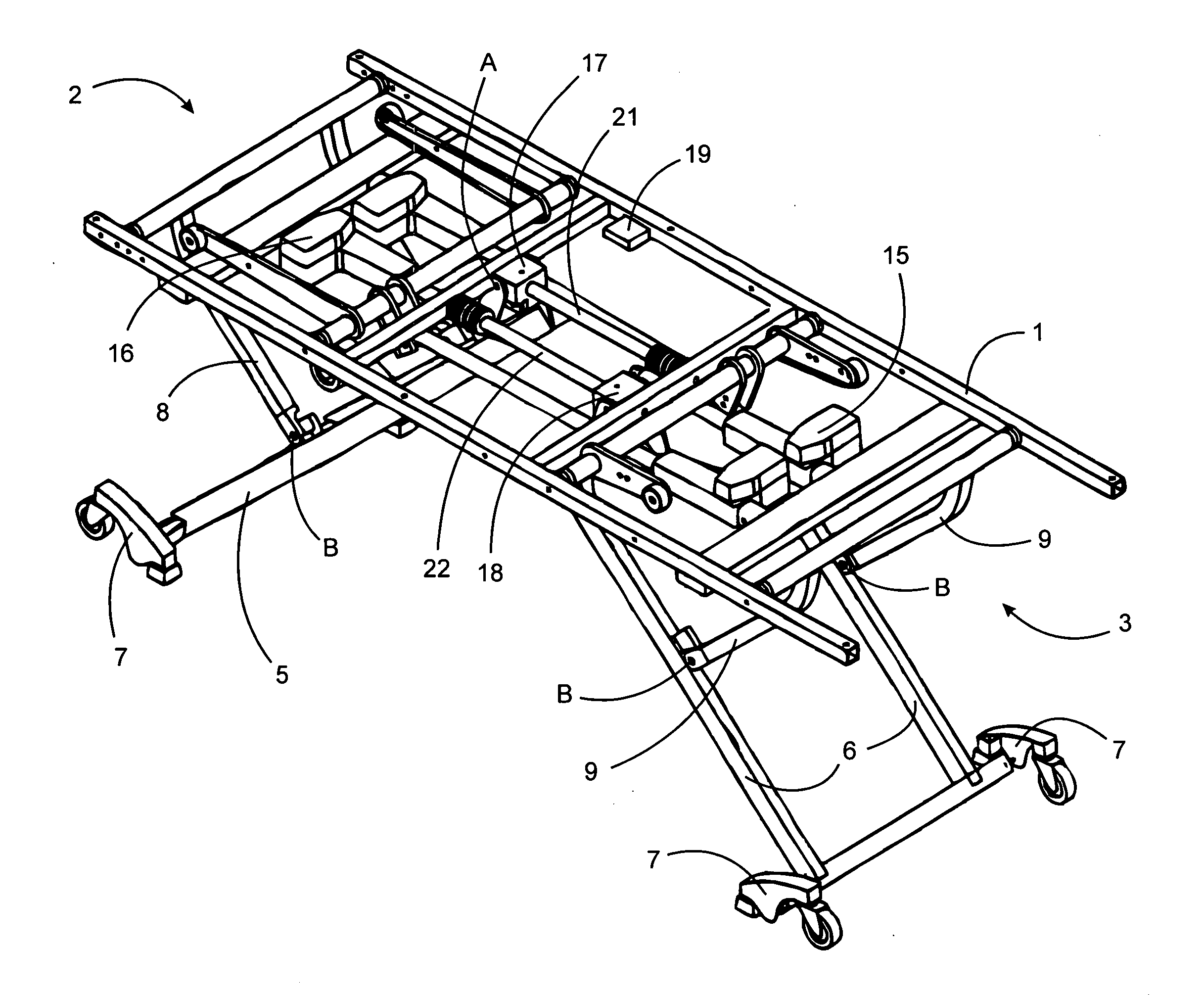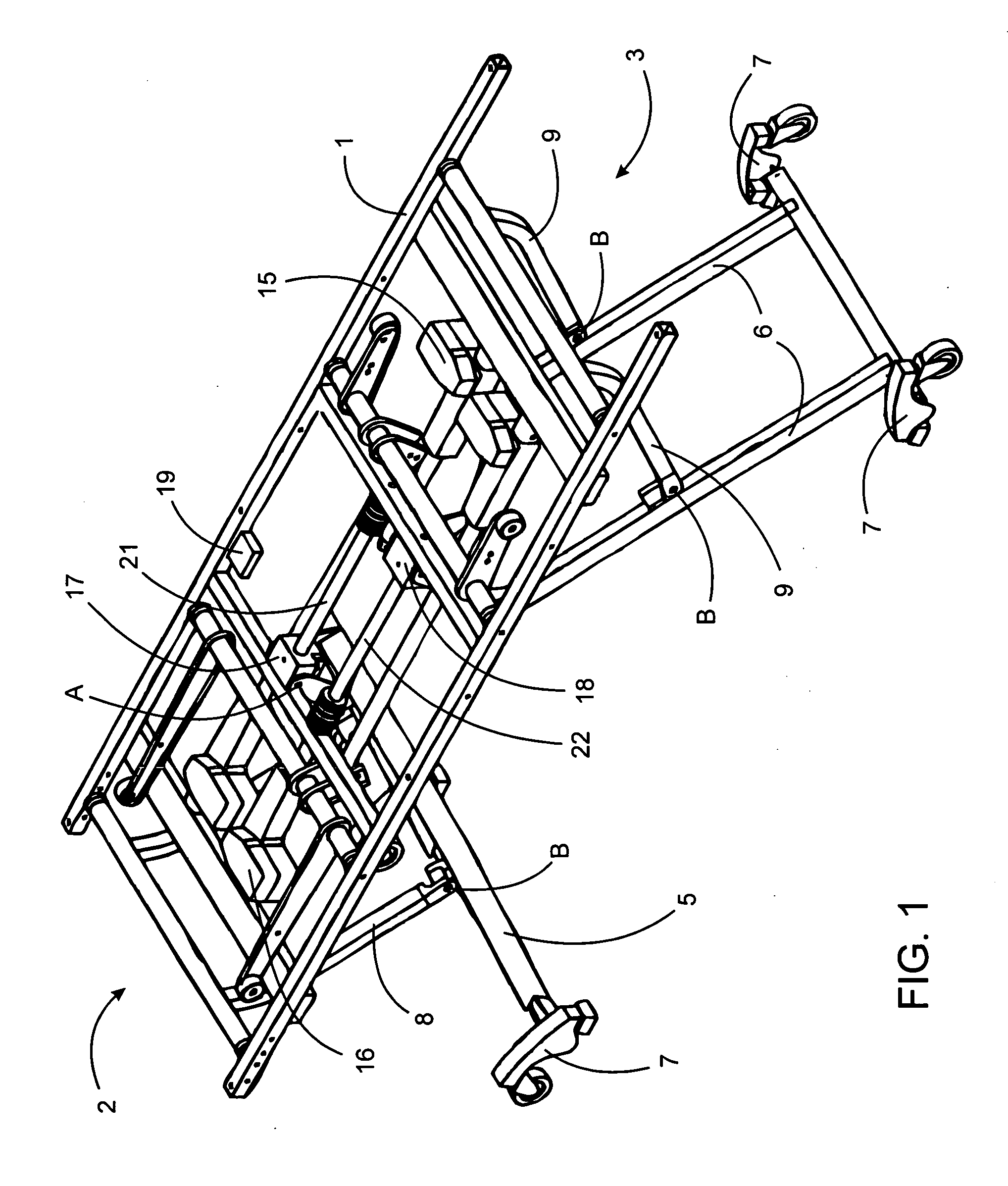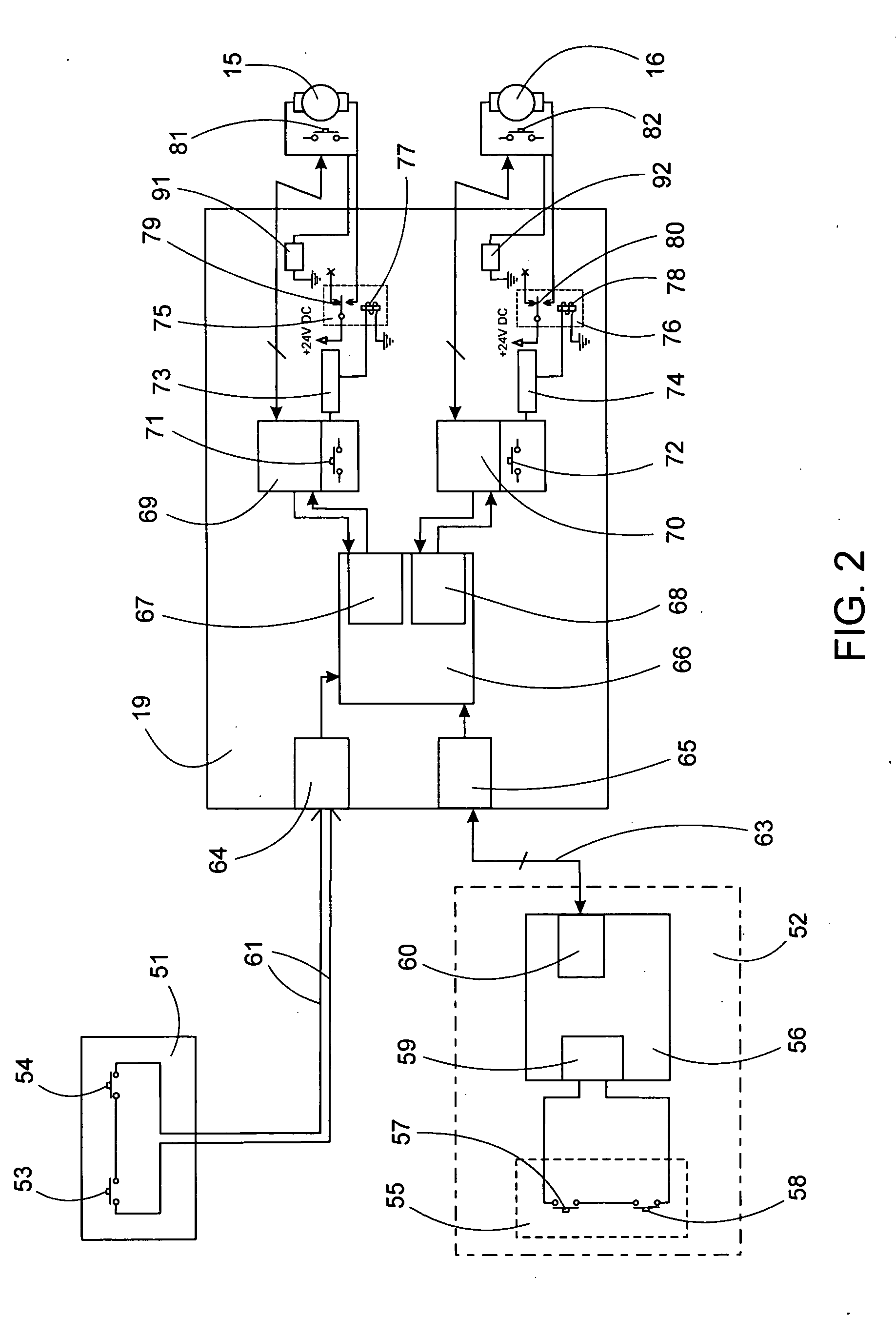Leveling system for a height adjustable patient bed
a leveling system and patient bed technology, applied in the field of patient beds, can solve the problems of significant and noticeable tilting of the bed, bed to acquire a tilt, and exacerbate the problem of problem, and achieve the effect of non-noticeable leveling of the bed
- Summary
- Abstract
- Description
- Claims
- Application Information
AI Technical Summary
Benefits of technology
Problems solved by technology
Method used
Image
Examples
Embodiment Construction
[0027] Referring to FIG. 1, a height adjustable bed having a leveling system of the present invention is depicted. The bed comprises a frame 1 having a head end generally depicted at 2 and a foot end generally depicted at 3. A set of downwardly depending head end legs 5 are pivotally attached to a head end bearing block 17 at a point A at a top of the head end legs 5. A set of downwardly depending foot end legs 6 are pivotally attached to a foot end bearing block 18 in a similar manner as the head end legs are attached to the head end bearing block. The head end bearing block 17 has a circular aperture therethrough so that it may move along a first linear guide 21 by action of a first linear actuator 15 coupled to the bearing block 17. The foot end bearing block 18 has a circular aperture therethrough so that it may move along a second linear guide 22 by action of a second linear actuator 16 coupled to the bearing block 18. Movement of the head end bearing block 17 causes the top of...
PUM
 Login to View More
Login to View More Abstract
Description
Claims
Application Information
 Login to View More
Login to View More - R&D
- Intellectual Property
- Life Sciences
- Materials
- Tech Scout
- Unparalleled Data Quality
- Higher Quality Content
- 60% Fewer Hallucinations
Browse by: Latest US Patents, China's latest patents, Technical Efficacy Thesaurus, Application Domain, Technology Topic, Popular Technical Reports.
© 2025 PatSnap. All rights reserved.Legal|Privacy policy|Modern Slavery Act Transparency Statement|Sitemap|About US| Contact US: help@patsnap.com



